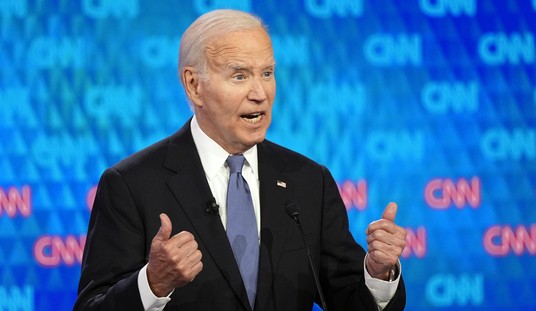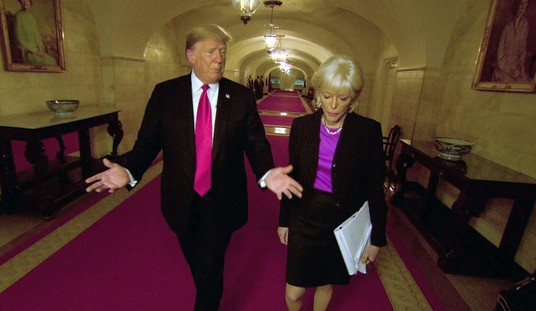What is Janet Yellen, new Fed chairman, really worried about?
Is it that reported unemployment will stay high, that the economic recovery will never get off the ground, that we will fall back into recession, or that consumer prices will fall, thereby further endangering the huge debts that already zombify the economy? These are big concerns, no doubt, but not her largest worry. Her largest worry has to be that foreigners will stop buying U.S. bonds.
This is far from a needless worry. Recent events, events of just the past few months and weeks, including the Russian invasion of Crimea, make it even more of a threat to the U.S. government. But, first, some background.
Foreign individuals and businesses cut back on their purchases of U.S. bonds years ago. Their place was taken by foreign central banks. The central banks simply created money in their own currency and used it to buy our bonds.
Why did they do this? The Japanese may have done this because they rely on us for defense and want to help support our economy. But most of the central banks did it to keep their own currencies from appreciating against the dollar.
The more dollars they bought, the less their own currencies appreciated against the dollar. In this way, they kept their export prices down and protected their export related jobs.
This was not unlike the trade wars of the 1930’s, conducted with tariffs, but this time the trade wars were conducted with currency manipulations.
The Federal Reserve always knew that we couldn’t rely on foreign central banks to buy our bonds forever. That is probably the main reason it began the program called quantitative easing, in which the Fed created money out of thin air specifically to buy back U.S. debt.
Quantitative easing was a kind of insurance policy. If foreign central bank buying of U.S. bonds collapsed, the Fed would already have a program in place to buy them back itself.
Recommended
The Fed always said that quantitative easing was meant to create U.S. jobs. But this never made much sense. Even a hard core proponent of QE, Fed official William Dudley ( formerly of Goldman Sachs) admitted that the Fed’s own economic models could not explain how creating money out of thin air and using it to buy U.S. bonds would increase employment. Some link to rising stock prices could be demonstrated, but then rising stock prices could not be shown to create jobs either.
One inference from this was that chairman Ben Bernanke, and now new chairman Janet Yellen, were just taking wild stabs in the dark. A more reasonable inference is that they had another reason for QE, one which they did not want to acknowledge.
Viewed in this way, it becomes clear that the 2008 bail- out was not so much a bail-out of Wall Street as a bail-out of Washington. The Federal Reserve feared that the market for government bonds was about to collapse, which would lead to soaring interest rates, and a complete collapse of our bubble financed government.
The Fed did not have the option of creating money and buying debt directly from the Treasury. That would be illegal. The Treasury must first sell its bonds to Wall Street, after which the Fed can then use its newly created money to buy them back. Hence, in order to rescue the Treasury, the Fed felt it had to rescue Wall Street.
This is a simplification of what happened, and only part of the story, but it is the untold part of the story, and in all likelihood the most important part. The Fed was in a panic in 2008, but not primarily about what might happen to Wall Street, and certainly not about what might happen to Main Street. It was in a panic over what might happen to government finance.
This interpretation is strengthened by new information contained in former Treasury secretary Hank Paulson’s recent book. He revealed that Russia tried in 2008 to persuade China to join in a collaborative effort to dump U.S. bonds in order to bring down the U.S. financial system. Although China refused to do so at the time, it is clear that China regards us as a geo-political foe, would like to end dollar dominance, and has itself been paring U.S. bond purchases.
The end result of the Fed’s panic during the Crash was over $3 trillion worth of Fed purchases of U.S. or what became U.S. backed bonds. In only a few years, the Fed became the largest single owner of U.S. bonds, even larger than Japan or China. The total U.S. debt held by the Fed today equals the entire US debt at the end of the Clinton administration. It is of course completely nonsensical that the U.S. government is borrowing such large sums from itself.
At the moment, Janet Yellen’s worries about finding buyers of government bonds can only be getting worse. For much of last year, foreign central bank purchases of U.S. bonds fell. As of October of 2013, they had been negative for three and six months. Then they turned up a smidge, only to fall again, so that the last three months show a decrease of over 5%.
It is known that Russia has withdrawn its U.S. bonds from custody of the Fed after the Crimea invasion, and has either been selling or could sell at any time. It will no doubt try again to persuade other countries to join in undermining the U.S. bond market and replacing the dollar as the mainstay of world trade.
Under these circumstances, it should not be surprising that the Fed is today taking only baby steps to reduce its program of creating new money to buy U.S. bonds. This program is not just meant to revive the economy, which it has not done and cannot do. It is more likely designed as a desperate and in the long run counterproductive effort to finance the US government and save today’s dollar dominated financial system.
























Join the conversation as a VIP Member